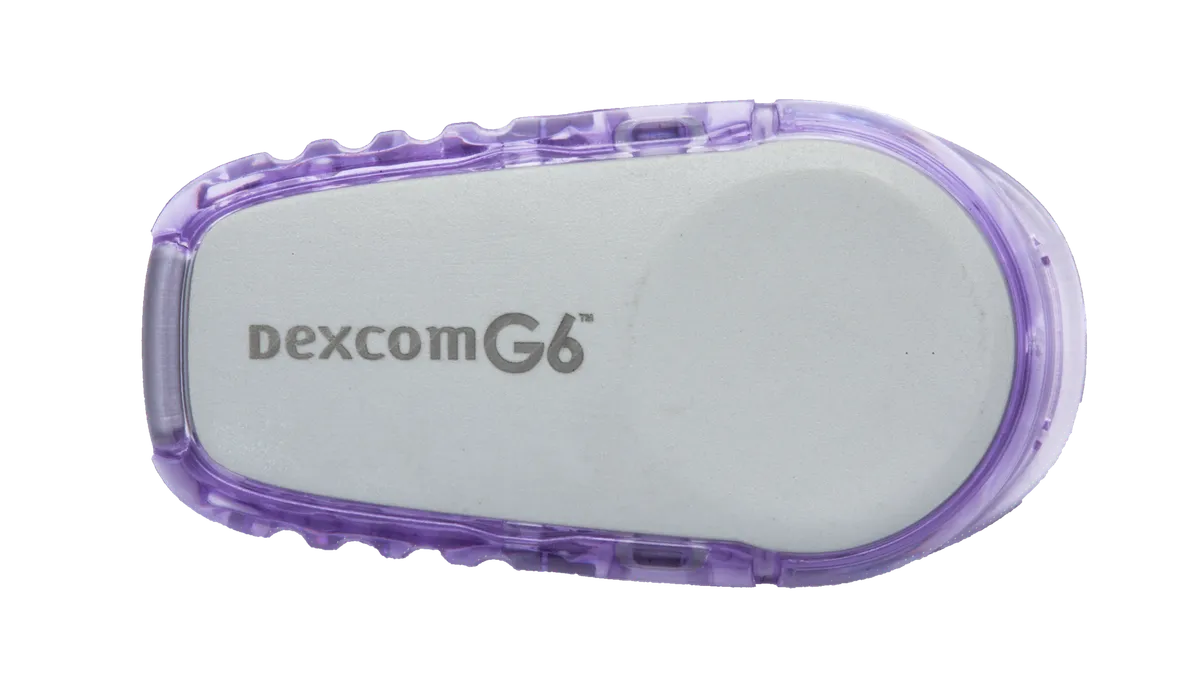Dive Brief:
-
Reporting results from a 110-person randomized controlled clinical trial published in Diabetes Care Thursday, researchers said Type 2 diabetics with Dexcom G6 devices spent more time in a target range and less time hyperglycemic than their peers who received standard hospital glucose management.
-
Scripps Whittier Diabetes Institute researchers behind the study found the sensors to be safe and effective in the hospital setting but are yet to determine if the benefits justify the additional cost of continuous glucose monitoring. The device failed to keep patients in a tighter glucose range recommended by the American Diabetes Association and used by some hospitals and found more mixed results on hypoglycemia.
-
CGM devices such as the Dexcom G6 and Abbott FreeStyle Libre offer an alternative way of keeping track of glucose levels. Such devices are designed for home use but FDA is allowing them to be used in hospitals during the COVID-19 pandemic to facilitate remote patient monitoring.
Dive Insight:
Hospitals typically perform point-of-care testing to manage the blood glucose levels of their diabetic patients. There are signs that approach is failing a significant minority of diabetic patients. Rates of hyperglycemia in non-critically ill hospitalized patients range from 38% to 46%. Hyperglycemia is linked to complications, mortality and longer stays in the hospital.
The Diabetes Care paper provides an indication of whether the use of CGM devices in hospitals could deliver benefits after the pandemic is over. Investigators randomized 110 adults with Type 2 diabetes to receive either Dexcom G6 or usual care during their stay in the hospital.
Patients in the G6 cohort spent 73% of the time in the 70 to 250 mg/dL range, compared to 64% of people in the standard of care group. Similarly, 33% of patients on standard of care experienced hyperglycemia, as defined by a blood glucose level in excess of 250 mg/dL. The rate in the G6 arm was 27%. The differences in rates of hyperglycemia and time in range were statistically significant.
However, CGM was statistically no better than standard of care at keeping patients in the tighter ranges of 70 to 180 mg/dL and 70 to 200 mg/dL. The hospital where the study took place aims to keep patients in the 100 to 180 mg/dL range and ADA guidelines list 140 to 180 mg/dL as the preferred target.
The failure of the Dexcom sensor to keep more patients in the tighter ranges therefore raises doubts about its value in achieving the targets set by diabetes experts. However, the authors of the Diabetes Care paper said the wider 70 to 250 mg/dL range “was a more realistic target” as patients enrolled in the study “were significantly dysglycemic at admission.”
The authors speculate the failure to improve time in the tighter range “occurred because our interventions were tailored toward giving extra rapid-acting insulin overnight for blood glucose 200 mg/ dL, a time when we otherwise would not be routinely using correction insulin.” Other potential explanations include the duration of the trial, which the authors said may have been too short to show the benefits of CGM, and the fact “physicians did not always accept the recommendations.”
For hypoglycemia, more patients in the CGM arm experienced at least one hypoglycemic event. In contrast, CGM was associated with shorter events and fewer events per patient.
Other inpatient studies have previously found CGM is no better than standard of care at controlling glucose levels, leading ADA to rule there is insufficient evidence to support the use of the technology in hospitals. The authors of the Diabetes Care paper think their study provides evidence, arguing that the study “clearly demonstrates the value of CGM in community hospitals.”
The researchers are still assessing whether the claimed benefits represent value for money, though. A follow-up study weighing the benefits against the cost of the devices and employment of a CGM support team is planned.










